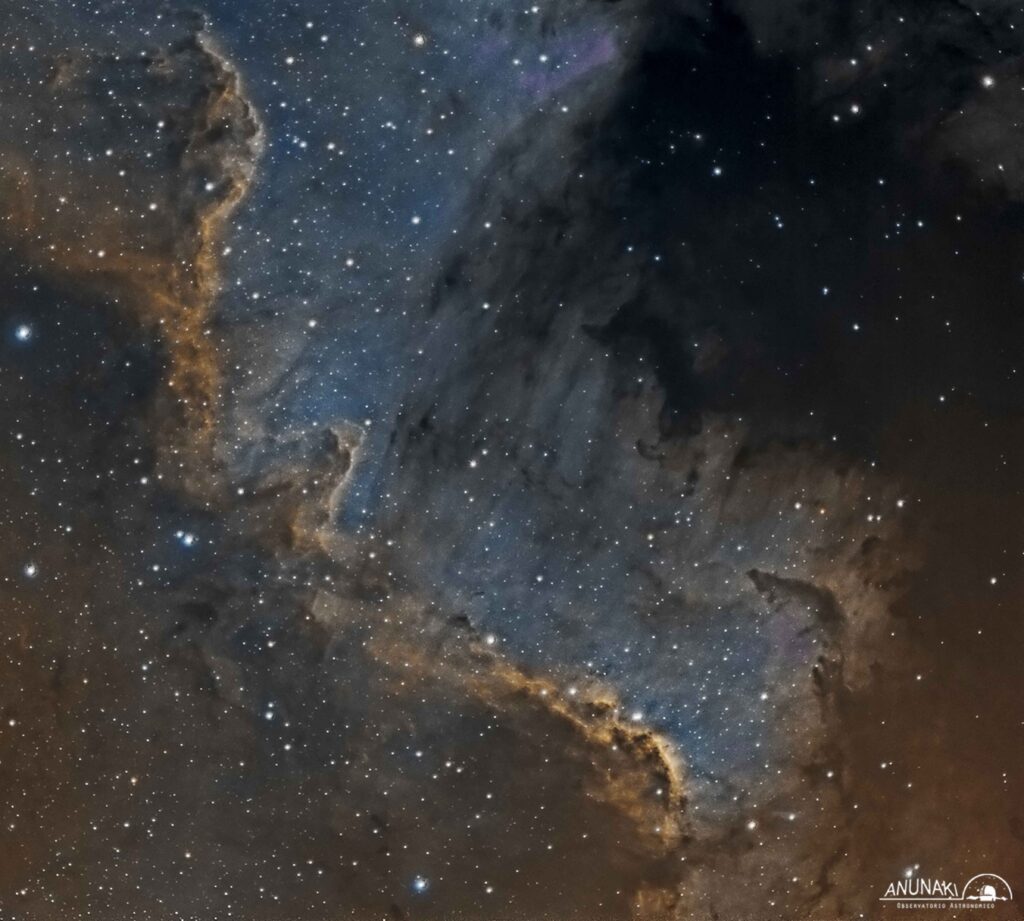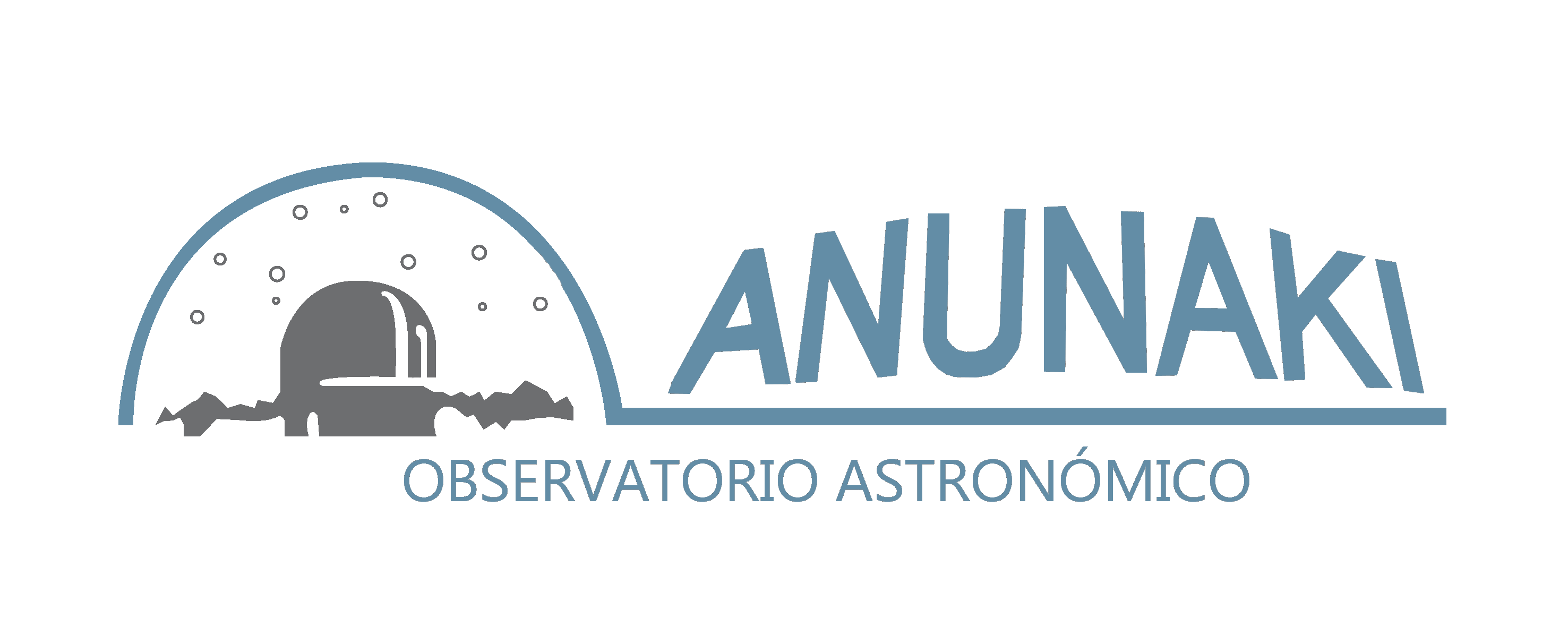NGC 7000 is an emission nebula in the constellation Cygnus, located near Deneb (α Cygni), also called the North American Nebula. The dark central region is called the Gulf of Mexico, since in some astronomical plates many years ago it resembled that region of the Earth.
NGC 7000 is a large nebula that covers an area equivalent to the full moon, but its low surface brightness means that it is not normally visible to the naked eye.
NGC 7000 and nearby Pelican Nebula (IC 5070) they are part of the same interstellar cloud of ionized hydrogen (HII region). The dark area of the center is a very dense region of interstellar material that lies in front of the nebula and absorbs light from it, giving the whole its characteristic shape.
The distance of NGC 7000 to Earth would be on the order of 1800 light years.

Technical data:
Telescope: SkyWatcher ED80
CCD:Atik314L+
Focal Length Reducer: Meade 6.3
Filters: Ha 12nm/O[III] 12nm/S[II] 12nm
Telescope Guide: S/C 203mm
Mount: LX200 GPSR
Guide CCD: QHY5
CCD Temp:-5º
Ambient Temp:21º/19º
Location: Anunaki Observatory / Rivas Vaciamadrid (Madrid)
These are cold molecular clouds that absorb light from surrounding stars. They are mainly made up of neutral H2, and an intense star formation takes place inside. But high-energy radiation from young, high-mass stars dissociates and ionizes hydrogen which, when recombined, emits the characteristic red light.
NGC 7000 is a chaotic complex in which dark veils of absorbent matter and vast, stellar clouds, excited by an extremely hot blue star named HD 199579, intermingle and confuse.

Technical data:
Telescope: SkyWatcher ED80
CCD:Atik314L+
Focal Length Reducer: Meade 6.3
Filters: Ha 12nm
Telescope Guide: S/C 203mm
Mount: LX200 GPSR
Guide CCD: QHY5
CCD Temp:-5º
Ambient Temp:21º/19º
Location: Anunaki Observatory / Rivas Vaciamadrid (Madrid)
By reversing the configuration of teles/cameras, this result has been reached, also in narrowband and through the use of the Hubble palette (SHO). You can see the change in the field photographed and the quality of the S/C ACF tubes.
A beautiful image that allows us to observe the delicate filaments of molecular dust of the nebula itself.

